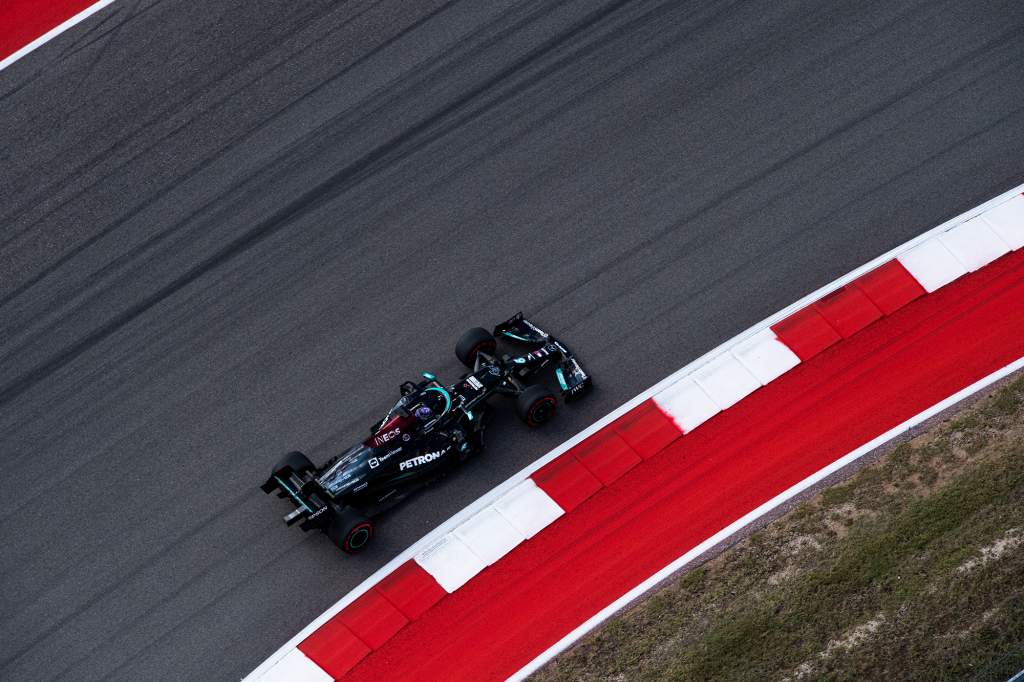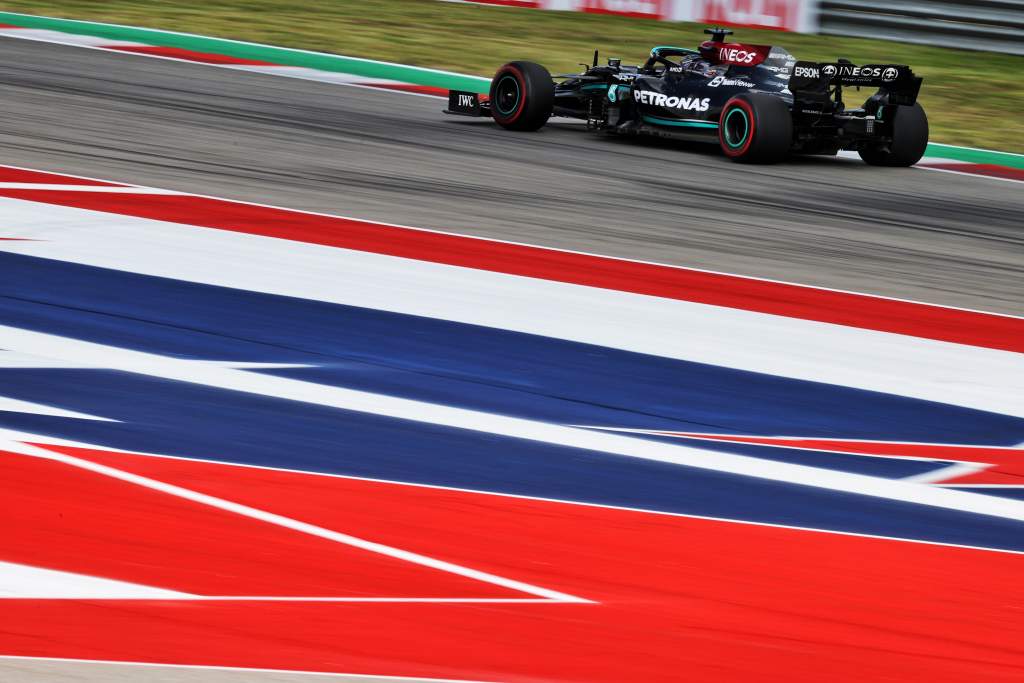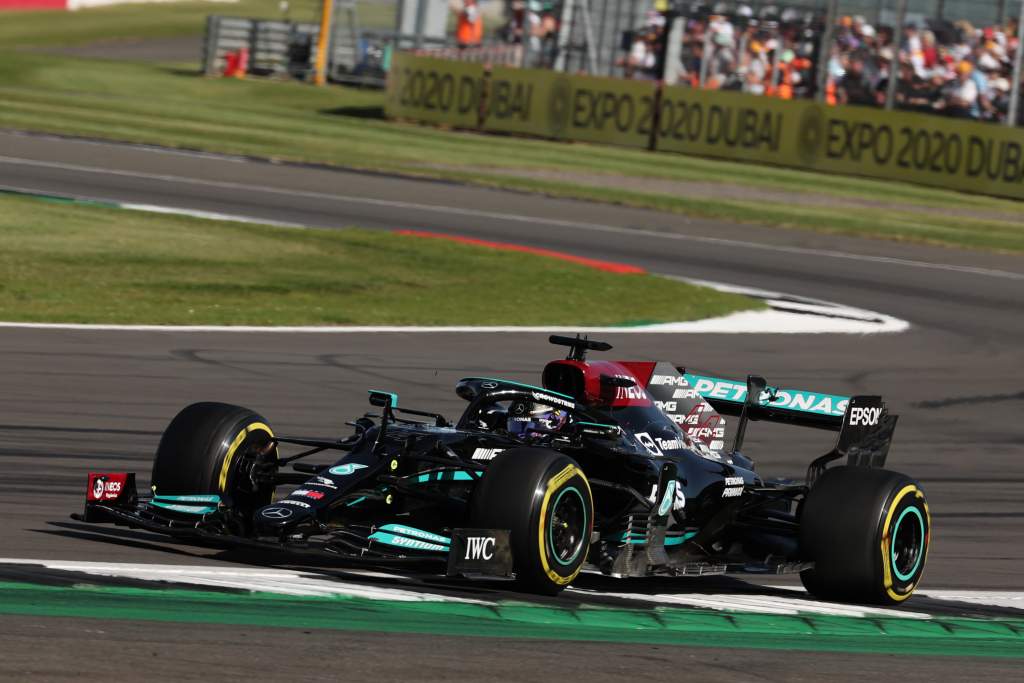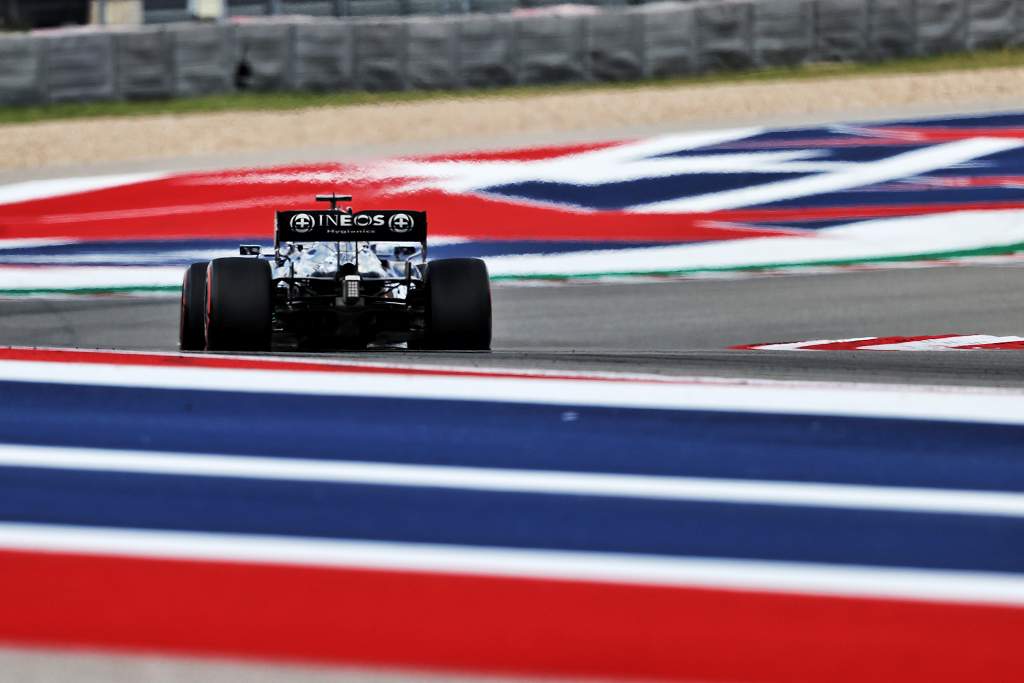Up Next

One of the recurring storylines during the 2021 Formula 1 season has been the accusations from Red Bull about Mercedes, and vice versa, in terms of what they’ve been up to in order to keep their competitive level high enough for them to still be fighting for the title with six races to go.
The latest talk focuses on Mercedes’ increase in straightline speed that we’ve seen in recent races. The changes made to the car at Silverstone, where the floor was modified along with the ‘cake tins’, were clearly positive but Mercedes does appear to have taken a step beyond that.
On the latest episode of The Race F1 Podcast, one of the things I talked about was the diffuser stall on the Mercedes giving it extra straightline speed.
Now, we can see exactly how that effect is being achieved by dropping the rear ride height of its cars on the straights.
The way the regulations are written, I believe this has to be done mechanically in some way or another.
As the diffuser gets closer to the ground, the airflow that passes underneath the main flat part of the floor can’t move fast enough through there to feed the diffuser. This means the airflow stalls.
When that happens, you lose a load of downforce from underneath the car, but you also shed a load of drag.
The key is that you only want do this on the straights where you don’t care about the downforce loss, and not in the corners.
The big question is how Mercedes has achieved this. It has to be done mechanically, so let’s consider the rear suspension of an F1 car. There’s basically a spring for each side – or a torsion bar as it is now – and then there’s a central component that links those two springs together.
This means that when the car’s going round, say, a left-hand corner, the right-hand side rear suspension will be in compression and the left side will be extending. Then, the central link that’s connected between the two rear rocker assemblies does nothing – it basically travels sideways because one is compressing and the other is extending.

When you are going down the straight, both of those suspension linkages are compressing. So the springs compress, the car is getting lower to the ground and also the third spring is compressing because the two rockers are going in the same direction.
And the downforce builds up on the car at the square of the speed, so in other words when you are at twice the speed you have four times the downforce.
When that happens, the load builds up on that suspension assembly and depending on the geometry of the linkages driving the third spring what you can do is have that linkage go ‘over centre’, meaning basically the rate of compression of the third spring which on the straights is holding the car up reduces.
This allows the third spring not to operate at the same ratio and basically it reduces in its rate of compression and in turn support, meaning the rear of the car will drop faster. When you hit the brakes, the rear of the car will rise and the diffuser airflow will reattach and produce the downforce for braking stability and corner balance.
It’s a bit like having gas struts on the rear tailgate of your car. When you press the button to open your tailgate, you open it a little bit and then the gas strut takes over and lifts it up. And when you close it, you’re pushing against the gas strut initially but when you get to a certain point it goes light and it closes easily. That is because the geometry of the gas strut goes over centre and when it does this it offers much lower resistance and allows you to close the tailgate.
That’s exactly the same as the Mercedes rear suspension. When it goes down closer to the ground, as with your tailgate getting closer to closing, the load lessens, the third spring goes over centre and basically it collapses the rear suspension just that little bit.

Crucially, that’s enough to stall the diffuser. Stall the diffuser and you get less drag. Also, in qualifying and when you go to pass someone in the race using DRS, you gain another advantage.
But the big thing is when you look at a lap of the Mercedes against the Red Bull, the Mercedes in general is just faster through corners and on the straights. Having the diffuser stall in this way also allows Mercedes to run more rear wing, which means more grip through the corners but still with the straightline speed you need because the diffuser stalls.
So there are compound gains. It’s critical for each circuit to identify the linkage geometry and when it would go over centre so it only happens when you need it to.
But with all of these tracks, there is a fairly clear black and white area where you don’t want that to happen.
For example, through these fast corners at Austin you’d make sure the car wasn’t going to collapse through there if you didn’t want to lose that downforce, but it does on the straights.
It’s potentially a massive advantage and I doubt Red Bull can copy it because it runs the high rake on its car. So for it to get its car close enough to the ground to make its diffuser stall would require a complete change in its aerodynamic philosophy, which isn’t going to happen.

The Mercedes suspension system seemed to arrive in line with its developments for Silverstone. That upgrade made the front corners of the underfloor work harder and that means there’s less airflow actually going to the diffuser so suddenly you can actually use that less airflow to get to the critical point of making the diffuser stall just that bit earlier.
So it’s a clever, effective and legal idea that’s going to be very difficult for Red Bull to get on top of.






